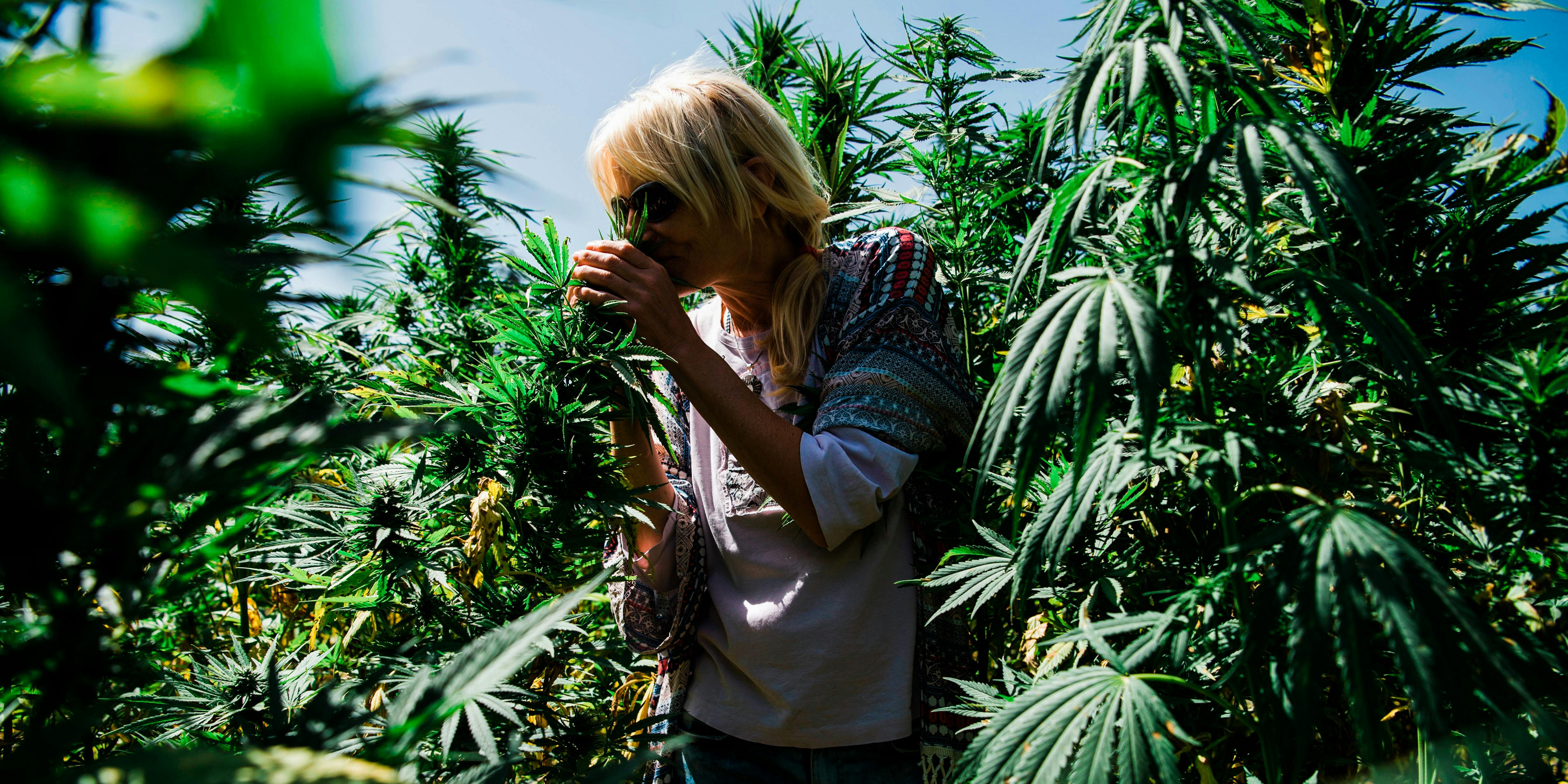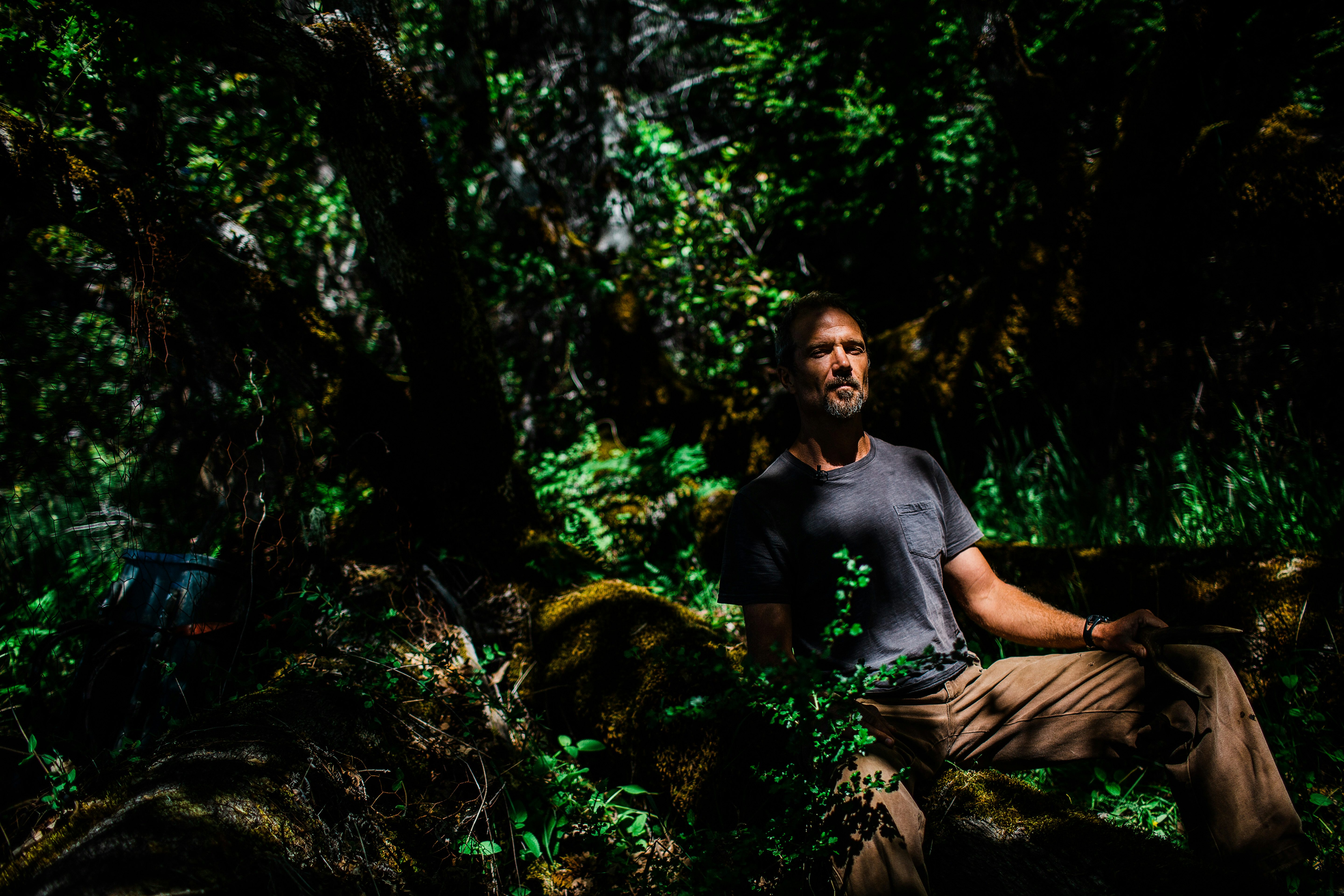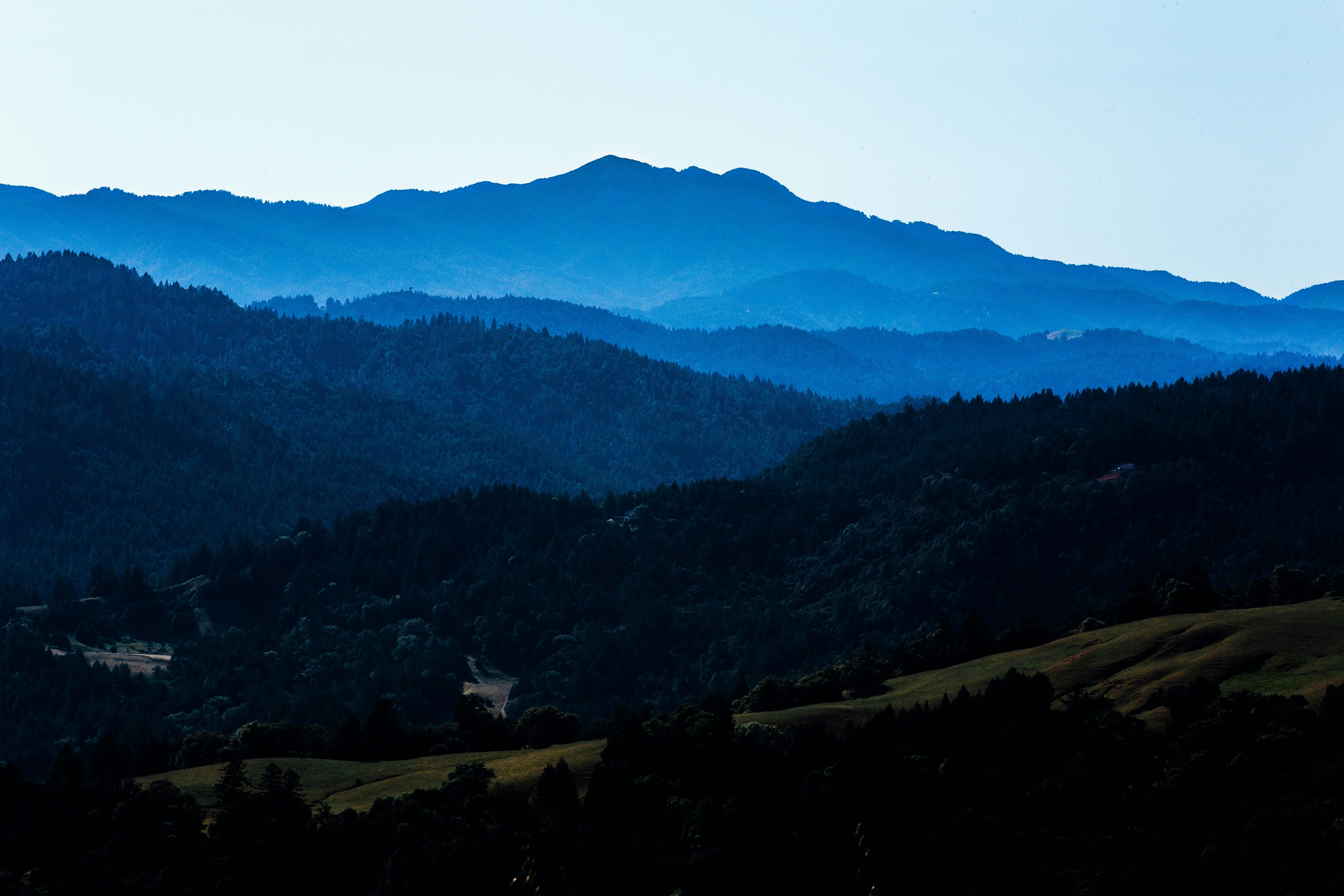
(Photo by Fadel Senna/AFP/Getty Images)
These Cannabis Pioneers Fear Legalization Will Leave Them Behind
For Humboldt’s second-generation cannabis farmers, legalization doesn’t just threaten their crop—it threatens their values.
Kathy Davis’ murder marked the first traumatizing event for the small, farming community of Salmon Creek in Southern Humboldt. In 1982, Davis, a social worker and mother to a teenage daughter, was beaten with an aluminum flashlight and then strangled to death by two men who took all the cannabis she’d been cultivating on her property and drove off.
More than a hundred residents—not just from Salmon Creek but from all over Southern Humboldt—gathered around a goldfish pond on Davis’ land to mourn and process how a thing like this could have happened in their community. Chris and Peter—a folk duo and mainstay, even now, at Humboldt County affairs—played guitar and sang “Amazing Grace.” Davis’ ashes were scattered around a fruit tree in her orchard.
Today, Southern Humboldt residents still remember that moment as what, local writer Kym Kemp describes, as “the beginning and end of innocence.”
It all began in the late 1960s, when young iconoclasts with utopian visions of living off the grid started driving along the coast of Northern California looking for a place to call home. Jesse Hill’s parents were a part of that movement. They met at Antioch, a liberal arts college in Yellow Springs, Ohio, and dropped out together in 1968 to join the anti-Vietnam idealism of San Francisco. “It was a beautiful time,” says Hill.
They worked side jobs, with plenty of time leftover to do psychedelics and enjoy the city’s surrounding nature. But by the early 70s, they were already beginning to feel, like others in their generation, that the urban environment—growing tense with protest and rampant drug use—couldn’t sustain their dream.
They hit the road in a beat-up Dodge power wagon to look for a place that could. And in 1971, they landed in Salmon Creek, where they camped through their first winter and, ultimately, built a small, wood cabin next to Kathy Davis’ property where they raised Hill and cultivated cannabis to supplement their modest lifestyle.
Their family and the rest of the Humboldt “hippies,” as Hill calls them, are known as the back-to-the-land movement. Together, their homesteads laid the foundation for what would become the largest-cannabis producing region in the United States: “the Emerald Triangle,” including Humboldt, Mendocino, and Trinity Counties.
“It was just a special time, there was a lot of energy and not a lot of money, but just enough,” recalls Hill. “What we lacked in material riches, we had in a really strong community.”
Today, Hill, 43, still lives on his parent’s land in a wood cabin his dad built just up the way from his childhood home, where his mom still lives. He’s one of an estimated hundreds of second-generation cannabis farmers who are fighting to preserve the Southern Humboldt of their childhood—its way of life and the grown-with-love cannabis that sustains it. But it’s becoming increasingly impractical with California’s burdensome new regulations for the recreational market, which opened on January 1st. There are approximately 12,500 cannabis farms in Humboldt County alone, of which about 1 in 10 are expected to transition to the legal market due to the cost and bureaucracy. The narrative is that most simply won’t survive. However, history reveals resilience is a trademark of Humboldt’s cannabis community.

Most pinpoint the first significant shift for California’s cannabis industry—and consequently the black market farmers of Humboldt—to the passage of Proposition 215 in 1996, when the state became the first to legalize medical cannabis. It didn’t allow for the licensing of commercial cultivators, but it did allow for caretakers to grow a limited number of plants for patients with medical marijuana cards and then sell that cannabis back to the patients. It marked the beginning of the state’s quasi-legal green rush.
Outsiders with profiteering ambitions began pouring into Humboldt and they brought crime, homelessness, and a general disrespect for the county’s way of life with them. The back-to-landers and their children remember that time vividly.
In high school, Hill and his friends would get someone over 21 to buy them a keg or some booze and then they’d meet up somewhere remote—on a mountaintop, by a creek, or at a house—to party. They had enough to get by, but they were never rich kids. The dream was to buy a front-wheel-drive Toyota Celica so they could do donuts out on the dirt roads. Then, big moneyed growers started rolling into town, Hill recalls, “in their big fancy trucks with their girlfriends with big tits and cocaine.”
“You’d go to parties and it was just obscene how much top-shelf booze people had,” Hill says. “They were just doing stupid shit, flaunting their money.”
“Prop 215 really brought the icky in,” says Lelehnia DuBois, a second generation, Humboldt resident who formerly cultivated cannabis. “My family, they never grew weed to make a bunch of money, they did it to buy their solar panels and to homeschool their kids. And now we’ve transitioned to ‘it’s all about money’ and our community is hurting because of it.”
The same lack of regulation and freedom that allowed for the birth of Humboldt’s off-the-grid farms, says DuBois, also created a hidden underbelly, from oil spills in nearby creeks as a result of irresponsible cultivation to a sex trafficking trade in which women who come to Humboldt to trim get held on remote properties against their will.
In the past five to ten years, says Wendy Kornberg, a second-generation cannabis farmer, there’s also been these bizarre incidents of cars getting lit on fire on the side of the road in Humboldt. They just sit—sometimes whole RVs—abandoned for months. Typically, someone breaks the windows first, then the tires go, and then they go up in flames. They’re probably, Kornberg says, old beaters driven into town by people looking to make some cash in the cannabis industry as trimmers.

“There are a lot of amazing things happening in the community but because of the drug war we’ve had this huge issue of being a clandestine culture that doesn’t communicate,” says DuBois. “That’s allowed for a lot of horrible things to come in under the term black market that have nothing to do with cannabis.”
The secretiveness predates Prop 215 and the influx of outsiders. The back-to-landers never had the option of being open because for decades their livelihoods depended on something that was illegal. The threat of raids in Humboldt was ever-present.
In 1983, the state of California rolled out the largest law enforcement task force in the United States specifically designed to crack down on black market cannabis grows. The Campaign Against Marijuana Planting—or CAMP—was comprised of local, state and federal enforcement from across 110 agencies. It had a heavy presence in Humboldt until it was dismantled in 2012, flying regularly over homesteads in choppers that kids from the area say they still hear like a post-traumatic flashback.
When Hill was at Salmon Creek Elementary School, it was common for a class to be disrupted by the sounds of the helicopters. The students and the teachers would all go outside, look up at the sky, and try to figure out which person from the community was about to get busted now. A few hours later, the chopper would fly back to where it came from with a big net holding someone’s crop in it.

While federal and state agencies mostly leave Humboldt cannabis farmers alone these days, raids are not a thing of the past. Humboldt County law enforcement still sometimes shows up on people’s properties, randomly demanding to see their permits and threatening to take their crop away. Even those who are trying to transition to California’s legal market—thousands of dollars into the process—are not immune.
Just this year, Kornberg, a second generation, cannabis farmer, was at a hospital with her two children saying goodbye to her husband’s dying grandmother when she got a call from the neighbor. A bunch of cars were driving up the road toward her house—local law enforcement with the fish and wildlife department, the water board, and a number of other agencies.
“Immediately my heart jumped into my throat, I started feeling sick,” recalls Kornberg. “I was like we’re not doing anything wrong, we have permission to be doing what we’re doing, but not exactly.”
Kornberg and her husband have been undergoing the permitting process to become legally licensed cultivators in California for three years. In order to get licensed by the state, they need a county permit, but, thus far, Humboldt has only issued “interim permits.” That’s what Kornberg has while her state application is pending—it’s all, along with records of the thousands of dollars they’ve paid in taxes—neatly organized in a chest at the house in case of a raid. But for Kornberg and thousands of others trying to do things ‘the right way,’ the contradictory laws and slow permitting process have still left them in legal limbo.
The only upside to this latest transition is that people who came to the county just for the green rush are leaving as the price of cannabis falls, finally giving locals their town back. For Humboldt’s second-generation farmers, just leaving isn’t an option.

As soon as Kornberg and Hill became old enough, they began learning the basics of cultivation from their parents. They both grew up like typical, back to the land kids—with limited electricity, compost toilets, and abundant vegetable gardens. As a teenager, Kornberg would go out to ranches in Mendocino, the county adjacent to Humboldt, and trim, making enough money to pay for an entire year of college. “I loved it, it was fantastic,” she recalls.
Hill and his buddies, starting at around 15, climbed miles into the Humboldt forest and started their own elaborate grows, camouflaged under the canopy of oak and firr trees so as to not cause suspicion. It was always a life-affirming experience, says Hill, hiking into the rugged serenity, digging your hands into the soil, and then scaling the trees to pull off leaves and let the sun through to the cannabis below.
Hill says the indoor revolution with high-powered lamps and controlled environments that can crank out “super crystally, stony buds” has made it difficult for the little guys like him to compete. It will become even more difficult now with massive, corporate grows opening south in Monterey and Santa Barbara Counties. Humboldt just doesn’t have the flatland for that kind of expansion and, even if it did, family farms wouldn’t have the capital for it.
Many are hoping Humboldt will find its niche, though, as a sort of eco-tourism destination for cannabis lovers—the “weed country” of California like Napa Valley’s “wine country.” It’s certainly got the charm and beauty for it with the towering, ancient redwoods and roads winding along the coast. The folks who are still there don’t want to get rich off cannabis—they never did. They’re just hoping that as California’s legal market blossoms into a multi-billion dollar industry, the people who birthed it aren’t left behind.
Herb Recommended Products:
READ MORE










